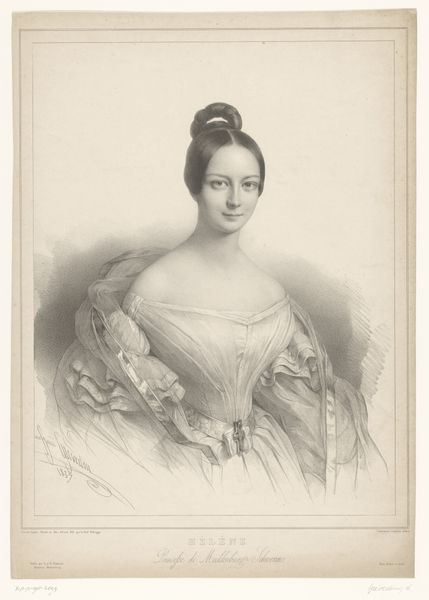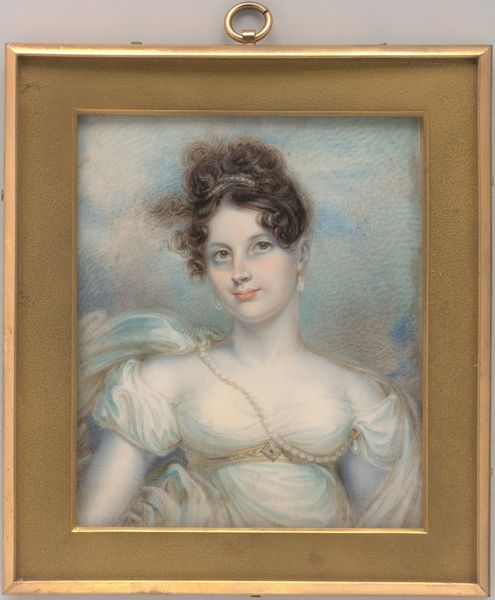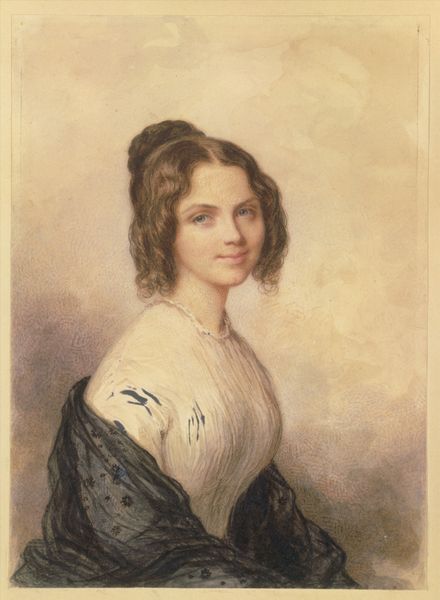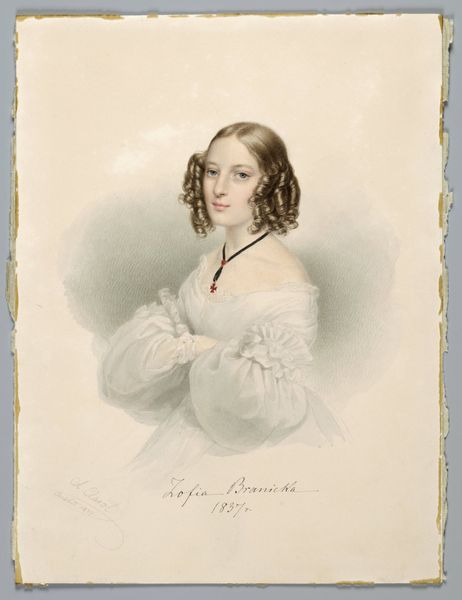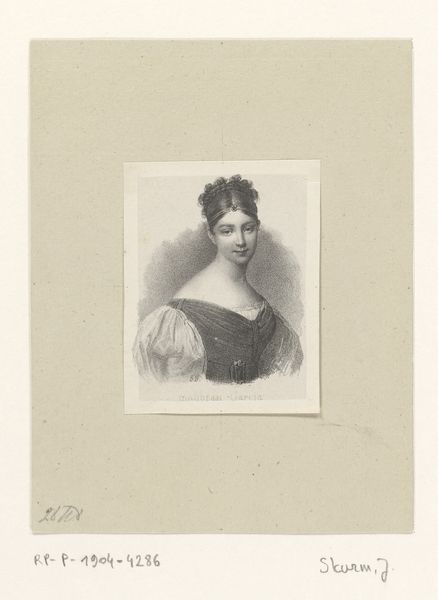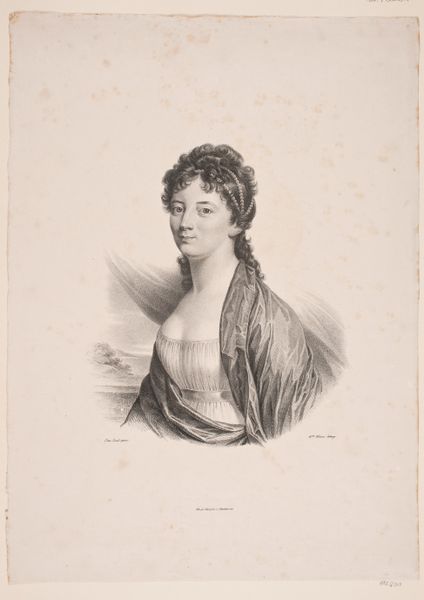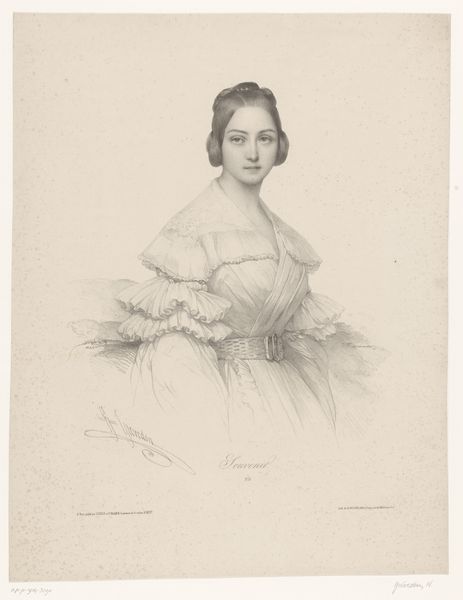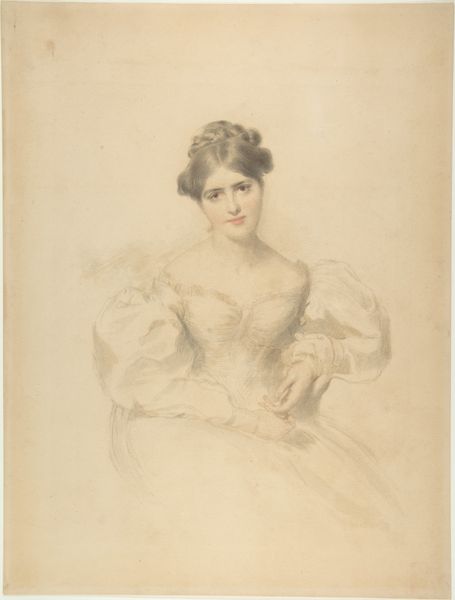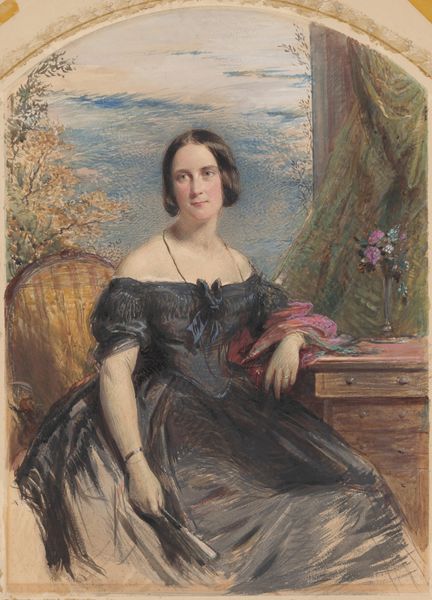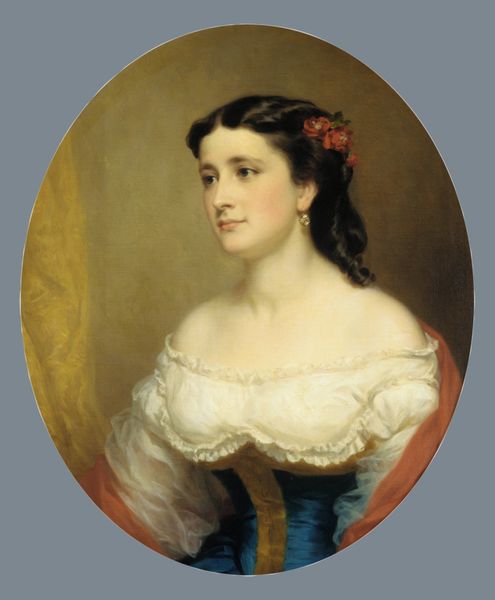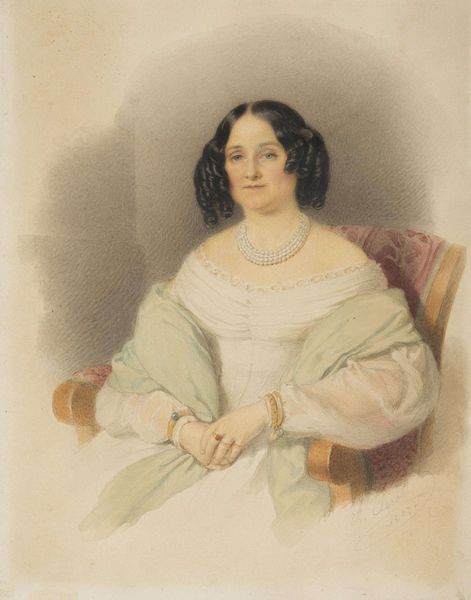
Countess Hélène Esterházy, née Countess Bezobrazov 1841
0:00
0:00
drawing, painting, print, paper, watercolor
#
portrait
#
drawing
#
painting
# print
#
figuration
#
paper
#
watercolor
#
romanticism
#
watercolor
Dimensions: Sheet: 7 7/8 x 5 7/8 in. (20 x 15 cm)
Copyright: Public Domain
Editor: So, this is Moritz Michael Daffinger’s "Countess Hélène Esterházy," painted in 1841 with watercolor on paper. The countess has this dreamy, ethereal look, which I think is heightened by the delicate use of color. What strikes you most when you look at it? Curator: I'm immediately drawn to the symbols she carries, visually and emotionally. Note the black ribbon and ornate cross she wears – it speaks volumes, doesn't it? Mourning jewelry was quite fashionable but also, quite poignant, carrying within it coded emotional expression. The carefully placed floral bouquet, too. Do you feel a weight of cultural memory in such visual elements? Editor: I hadn't really considered the necklace as a piece of mourning jewelry, but now that you point it out, it seems to carry a much deeper resonance than if it were merely decorative. Is that why she appears to have such solemn gaze? Curator: It could very well be. The portrait seems to memorialize something. Perhaps more broadly, she's representing a generation experiencing cultural shifts, loss, or remembrance through imagery? The flowers, for instance – what meanings do they trigger for you? Think about floriography – the language of flowers so prevalent then. Editor: I suppose the flowers could be whispering something...maybe remembrance, definitely fragility. It’s interesting to consider this not just as a pretty picture, but a vessel for emotions and ideas that were very specific to that time. Curator: Precisely. Portraits become fascinating windows when we consider how symbols shape, carry, and, in turn, stir, the viewer across generations. Editor: Absolutely, I will definitely look at portraits differently from now on. Thanks!
Comments
No comments
Be the first to comment and join the conversation on the ultimate creative platform.
